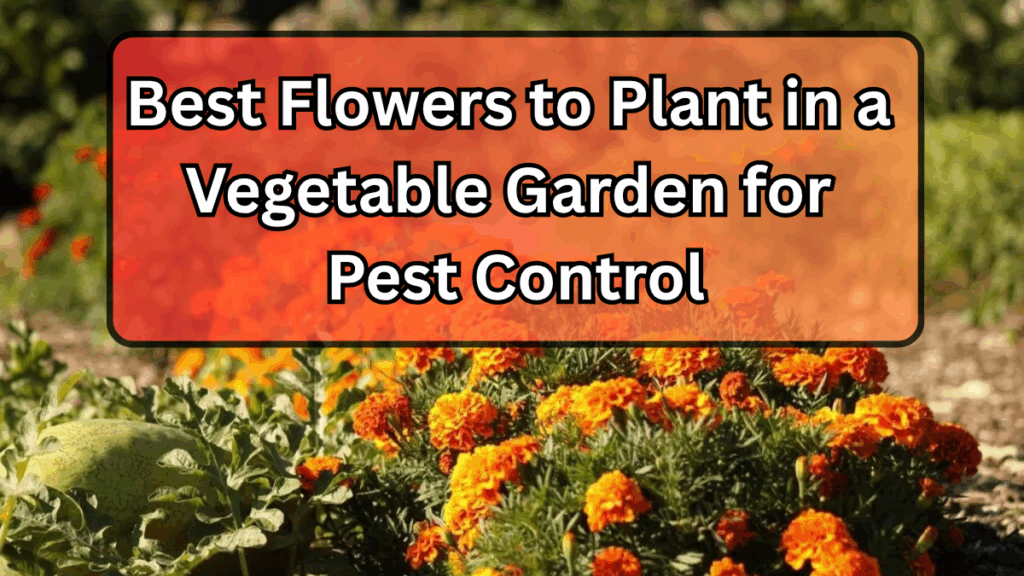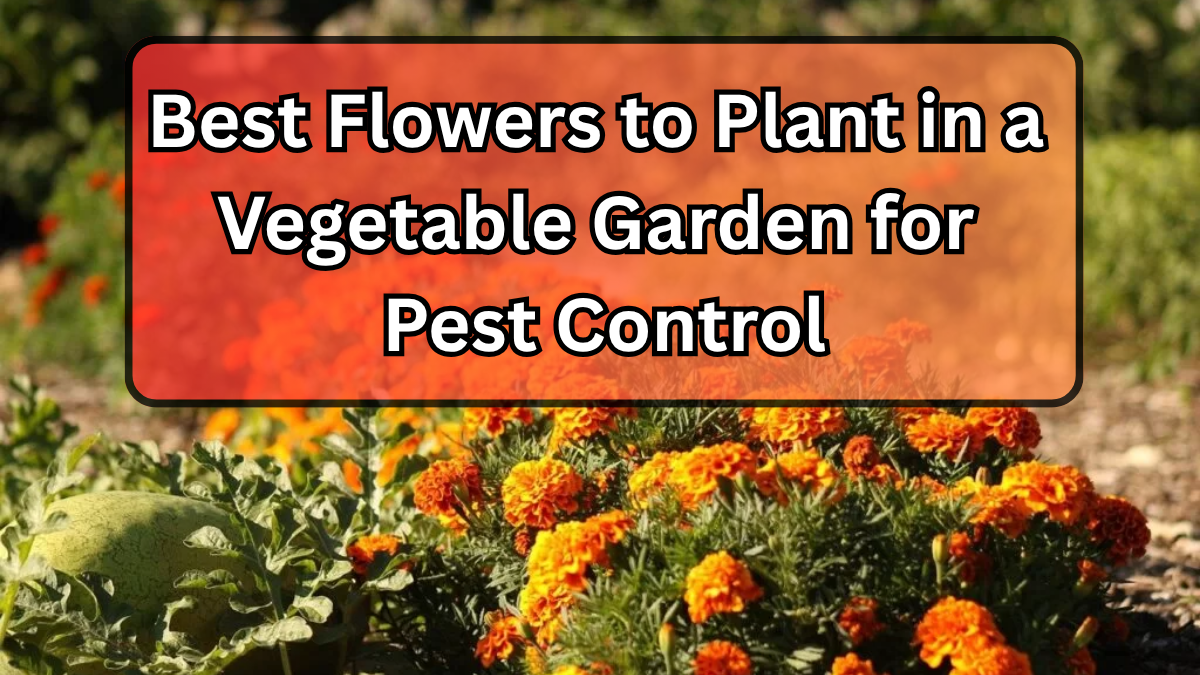Adding flowers to your vegetable garden is more than just a visual treat—it’s a smart gardening strategy. Certain flowers can naturally repel harmful insects, attract pollinators, and improve overall plant health. By strategically planting flowers in vegetable gardens, you can reduce the need for chemical pesticides while boosting your garden’s productivity.

Why Plant Flowers in a Vegetable Garden?
Flowers in a vegetable garden aren’t just decorative. They serve multiple purposes:
-
Pest Control: Many flowers release natural scents that repel harmful insects.
-
Attract Pollinators: Bees, butterflies, and other pollinators help your vegetables produce bigger and healthier yields.
-
Biodiversity: A mix of flowers and vegetables creates a balanced ecosystem in your garden.
-
Companion Planting: Some flowers improve the growth of nearby vegetables by enriching the soil or deterring pests.
Top Flowers for Pest Control in Vegetable Gardens
Effective Flowers and Their Benefits
| Flower Name | Pest Control Benefits | Attracts Pollinators | Best Companion Vegetables |
|---|---|---|---|
| Marigold | Repels nematodes, aphids, and whiteflies | Bees | Tomatoes, peppers, carrots |
| Nasturtium | Attracts aphids away from vegetables | Butterflies | Cabbage, cucumbers, radishes |
| Calendula | Repels squash bugs and tomato hornworms | Bees | Tomatoes, cucumbers, squash |
| Borage | Deters tomato hornworms and cabbage worms | Bees, hoverflies | Tomatoes, strawberries, cucumbers |
| Lavender | Repels moths, fleas, and beetles | Bees | Brassicas, carrots, onions |
| Sunflower | Attracts beneficial insects that eat pests | Bees, birds | Cucumbers, squash, corn |
| Chrysanthemums | Contains pyrethrum to repel insects | Minimal | Almost any vegetable |
Tips for Planting Flowers in a Vegetable Garden
Smart Planting Strategies
-
Interplanting: Scatter flowers among vegetables rather than keeping them in separate areas to maximize pest control benefits.
-
Choose Seasonal Flowers: Select flowers that bloom throughout the growing season for continuous protection and pollinator attraction.
-
Mix Varieties: Plant a combination of flowers that attract beneficial insects and repel pests.
-
Avoid Invasive Species: Some flowers can take over your garden. Stick to well-behaved varieties for easier maintenance.
Benefits of Integrating Flowers for Pest Control
-
Reduces chemical pesticide use and promotes organic gardening.
-
Improves vegetable yield and quality by increasing pollination rates.
-
Supports local biodiversity by attracting a variety of beneficial insects.
-
Enhances the aesthetic appeal of your vegetable garden.
FAQs
Q1: Can flowers attract pests instead of repelling them?
A: Some flowers may attract unwanted insects if planted without careful planning. Focus on flowers like marigold, nasturtium, and calendula for pest control while also drawing beneficial pollinators.
Q2: How many flowers should I plant per vegetable bed?
A: A good rule of thumb is to plant flowers in clusters of 2–3 plants per 1–2 square meters of vegetable space. This ensures enough coverage without overcrowding your vegetables.
Q3: Do all flowers attract pollinators?
A: Most flowering plants attract pollinators, but some, like chrysanthemums, attract fewer. Incorporate a mix of flowers to maximize pollination in your vegetable garden.
Q4: Can flowers improve vegetable growth besides pest control?
A: Yes! Flowers like borage enrich the soil with nutrients, and others, like nasturtiums, can act as a “trap crop” drawing pests away from your main vegetables.
Click here to learn more
